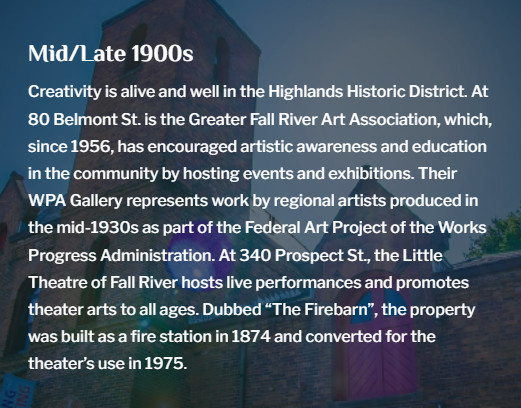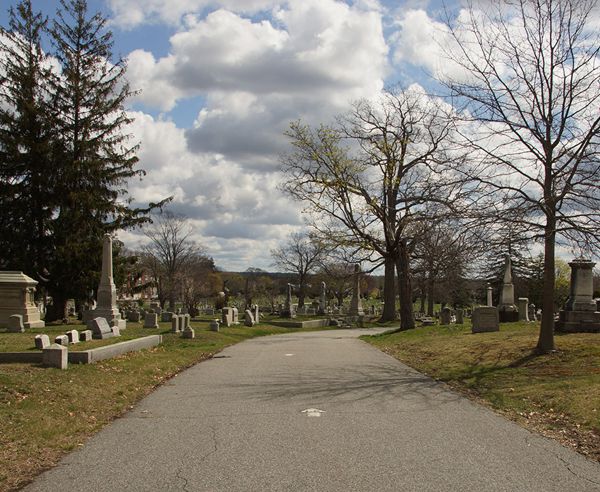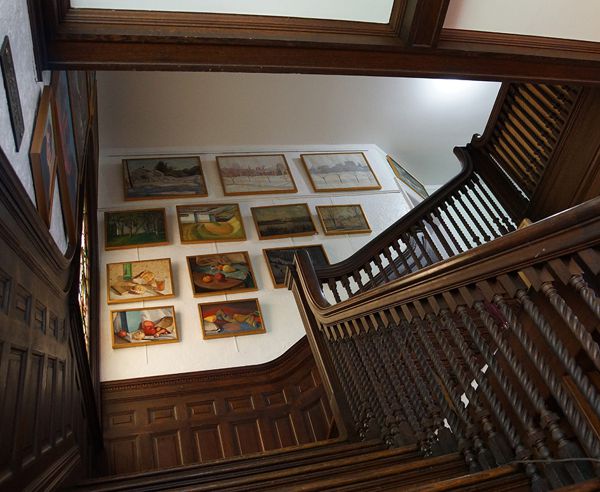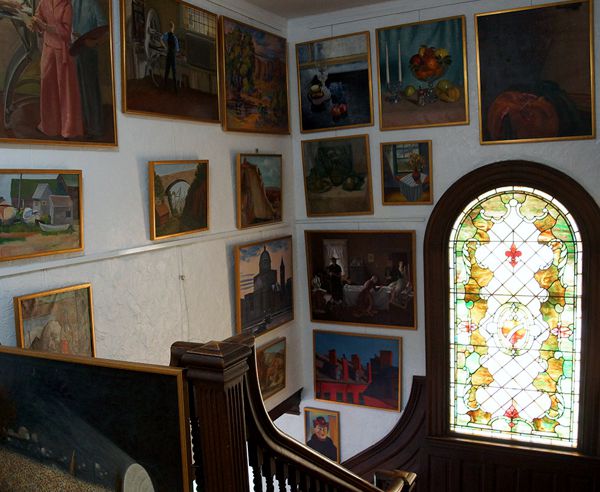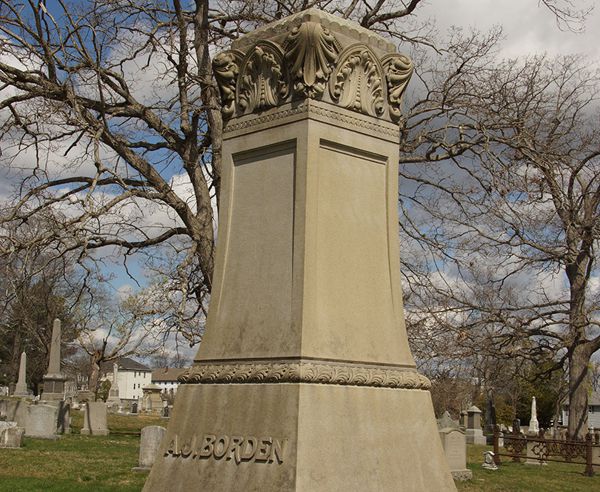Up in Elevation; Down in History
Head to the Highlands to learn some lesser-known facts about Fall River and its role in shaping modern life in the region. Stop by one of the neighborhood’s famous homes including Maplecroft, where Lizzie Borden lived after her infamous trial, and numerous historic homes that were used to harbor and protect escaped slaves in the Underground Railroad. Learn about these properties, and many other facets of the city’s evolution, at the Fall River Historical Society, which has been educating the community since 1921.
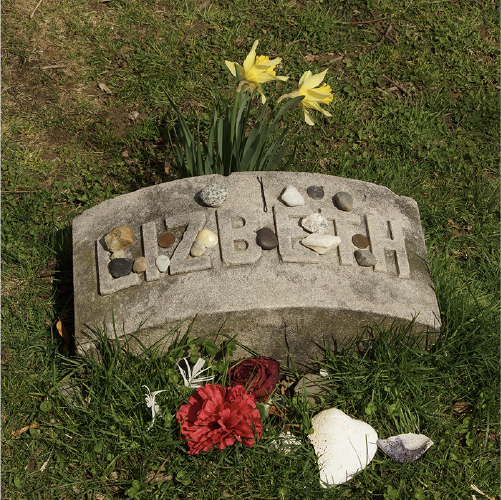
Speaking of Lizzie Borden, her grave is a popular destination within Oak Grove Cemetery. The cemetery is Fall River’s largest, covering over 120 acres. It is also the burial site of other members of the prominent Borden, Durfee, and Charlton families, and other elite figures from Fall River’s past. Built in 1855, Oak Grove Cemetery was designed by architect Josiah Brown who was also responsible for some of Fall River’s best-known mill buildings from the same era.
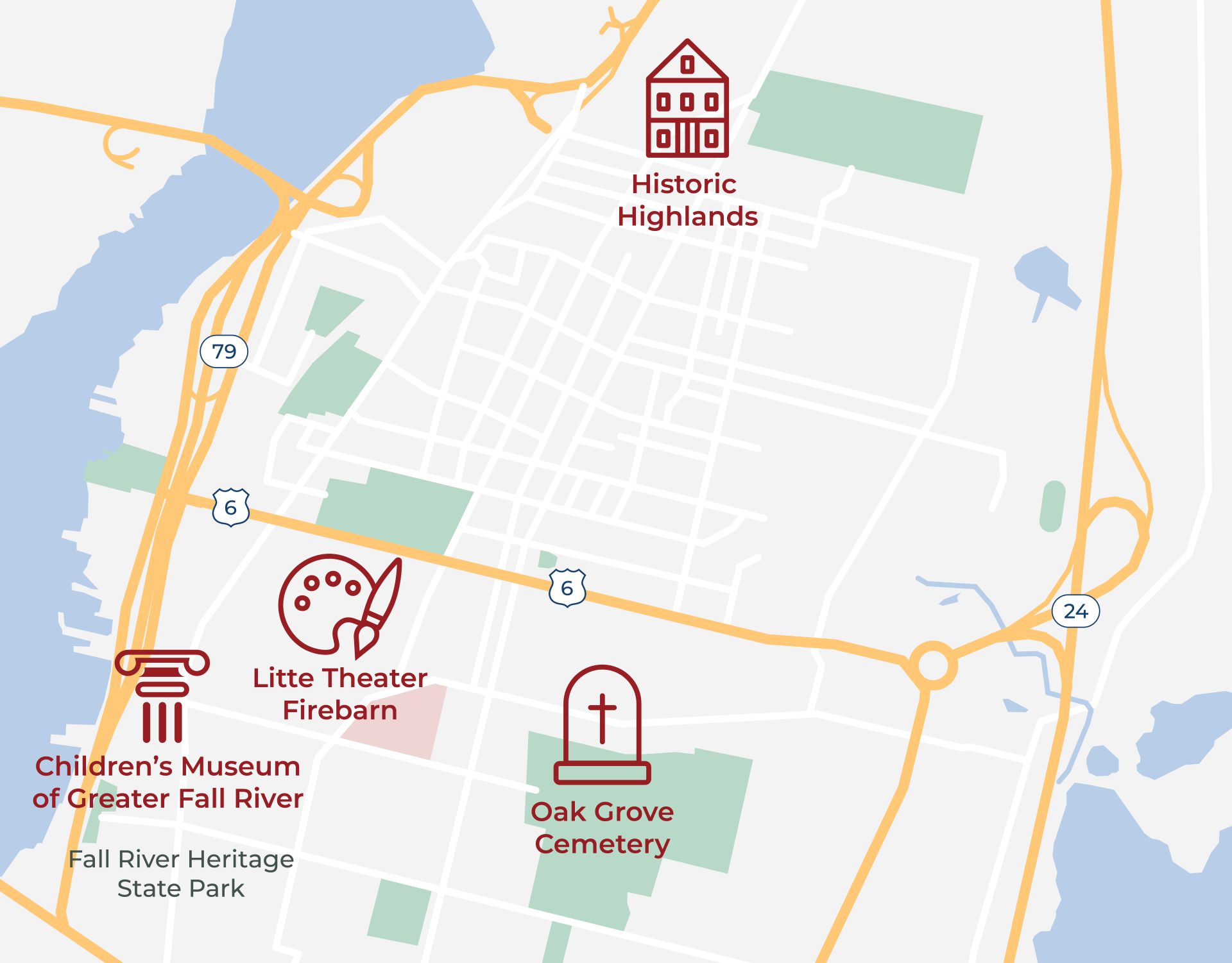
Click here for more things to do in the area
Highs, Lows, & Progress
1843
Fall River’s reputation has been forged as a working-class city, and for good reason - its heritage as a manufacturing hub is known far and wide. But Fall River has also been home to some well-to-do citizens over the years, and after the Great Fire of 1843, many of the city’s mill owners built homes in what is now known as the Highlands Historic District. This created both physical and symbolic distance between the city’s wealthy landowning elites and the lower-class workers they employed.
Mid-1800s
Despite the unfortunate reality that slavery was a major part of foundational American history, Fall River played an important role in fighting slavery as a center for abolitionist activity. Notably, Dr. Isaac Fiske’s house, located at 263 Pine Street, is nationally recognized for having been a key stop on the Underground Railroad. Fall River is home to several other such properties, its seaside location having made it a strategic destination for ships carrying fugitive slaves from the South.
Mid/Late 1800s
The Fall River Historical Society, currently located at 451 Rock Street, boasts the world’s largest collection of Lizzie Borden artifacts. It is a living museum where one can experience the authentic feel of a 19th-century Fall River home. The house was originally built for Andrew Robeson Jr., heir to a whaling fortune from nearby New
Bedford, on Columbia Street in 1843. It was moved, piece by piece, to its current location in 1870.
Late 1800s
Perhaps surprisingly to many residents at the time, Lizzie Borden called 306 French Street home from the end of her 1893 trial until her death in 1927. The house, nicknamed “Maplecroft”, is adorned with antique furniture, art, and Borden-themed decor. Across President Avenue lies North Park, which has a distinct hillside terrain offering views of the Taunton River. It was designed by the Olmsted Brothers and built in 1883. It is now a private home and unavailable for tours.
Mid/Late 1900s
Creativity is alive and well in the Highlands Historic District. At 80 Belmont St. is the Greater Fall River Art Association, which, since 1956, has encouraged artistic awareness and education in the community by hosting events and exhibitions. Their WPA Gallery represents work by regional artists produced in the mid-1930s as part of the Federal Art Project of the Works Progress Administration. At 340 Prospect St., the Little Theatre of Fall River hosts live performances and promotes theater arts to all ages. Dubbed “The Firebarn”, the property was built as a fire station in 1874 and converted for the theater’s use in 1975.
Historical Buildings Today
Fall River’s Highlands Historic District boasts some of the city’s most unique and enduring architectural features. The eldest is the Tory House, a Colonial home built circa 1750 that stands proudly at 96 French St. At the center of the Highlands, Charlton Memorial Hospital has been providing medical services to the city since 1885. Nearby, at 657 Highland Ave., stands “The Rising Sun”, a Japanese-style home built in 1910 designed by Ralph Adams Cram. The home was constructed in the style of kanawa tsugi, a Japanese method of interlocking wood rather than using nails.
Eat + Drink
• Christopher’s North End
• Highland Pizza
• New Boston Bakery
• Sweet Rose Cafe
• The Twisted Griddle
To Do
• Maplecroft and other Historical Houses
• Oak Grove Cemetery
• The Little Theater of Fall River (Firebarn)
Explore More
TROLLEY STOPS
1
2-3
4-5
6-7
8-9
10-11-12
Subscribe
Stay updated on all things Fall River.





